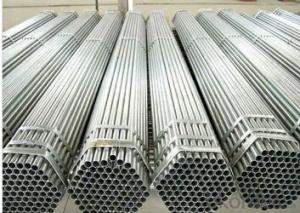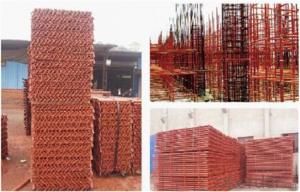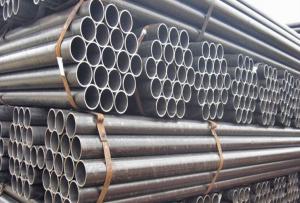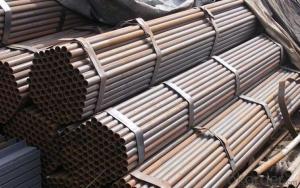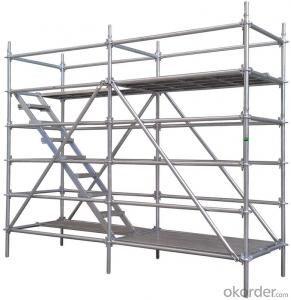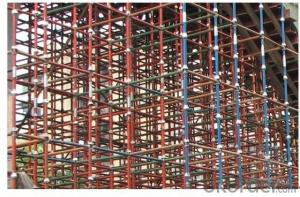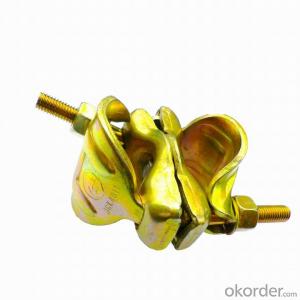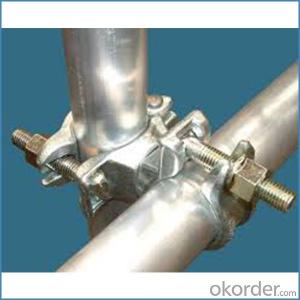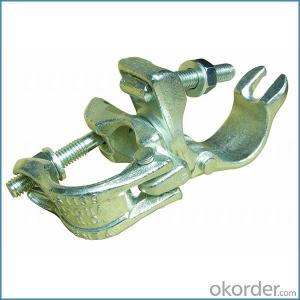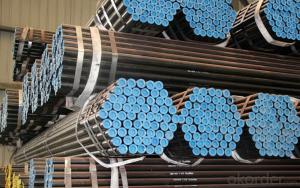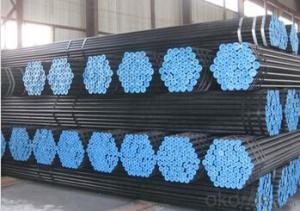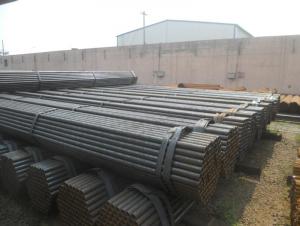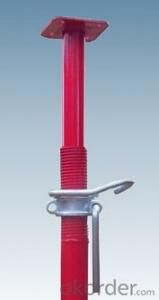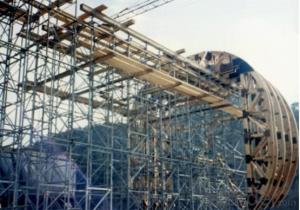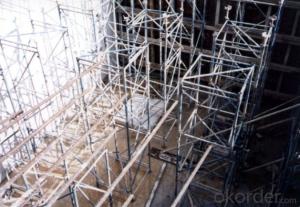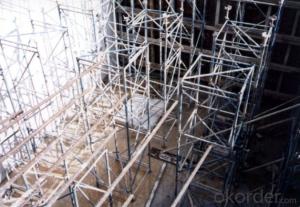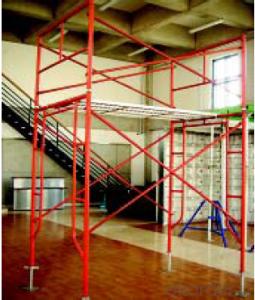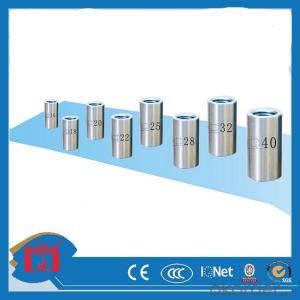Scaffolding Round Steel Tube
- Loading Port:
- China Main Port
- Payment Terms:
- TT OR LC
- Min Order Qty:
- -
- Supply Capability:
- -
OKorder Service Pledge
Quality Product, Order Online Tracking, Timely Delivery
OKorder Financial Service
Credit Rating, Credit Services, Credit Purchasing
You Might Also Like
Quick Details
| Thickness: | Outer Diameter: | ||||
| Place of Origin: | Secondary Or Not: | Application: | |||
| Technique: | Certification: | Surface Treatment: | |||
| Special Pipe: | Alloy Or Not: | end: |
Packaging & Delivery
| Packaging Detail: | In bundle,wooden cases,non woven cloth or bags,or as required. |
| Delivery Detail: | DURING 25 days |
Specifications
BS EN10219 scaffolding steel tube
1.W.T :0.5-2.5mm
2.O.D :20-219mm
3.Length:2--12m,
| Name | BS EN10219 scaffolding steel tube |
| Standard | ASMEAS106 ASMESA210 ASMESA213 ASMESA335 DIN17175 GB3087 GB5310 |
| Grade | A,B,V,T11,T12,T22,T91,St35.8,St45.8 ,20#,20G,20MnG,20MoG,15GrMoG,12Cr1MoVG |
| OD | 20-219mm |
| WT | 0.5-2.5mm |
| Length | as required |
| Brand | Topensea |
| Web Site | www.topensea.com |
| Package | wrapped in buandles with strips,black painting,plastic caps on both ends,according to customer's requirements |
| MOQ | 5Ton |
| Delivery time | during 25 days after receiving customer's deposit |
| Payment | T/T L/C Paypal Western union |
| Advantages | 1.Abundant stock and prompt delivery 2.A series of grades and specifications as per customer requirements 3.Reasonal price and honest engagement 4.We have intimate cooperation relationships with several larger shipping compernies that make |
- Q: What are the recommended safety precautions for using steel tube couplers in scaffolding?
- To ensure the safety of workers and the stability of the scaffold structure, it is essential to adhere to several recommended safety precautions when using steel tube couplers in scaffolding. 1. Inspection: Before utilizing steel tube couplers, it is critical to thoroughly inspect them for any defects, such as cracks, corrosion, or damage. Only employ couplers that are in excellent condition and meet the necessary safety standards. 2. Proper Installation: Guarantee that the steel tube couplers are correctly and securely installed. Follow the manufacturer's instructions for assembly and ensure that all connections are tight and properly aligned. The stability of the scaffold can be compromised by incorrect installation. 3. Load Capacity: Determine the load capacity of the steel tube couplers and ensure that the scaffolding structure is not overloaded. Exceeding the maximum load capacity can result in structural failure and accidents. Take into account the weight of workers, equipment, materials, and any other loads placed on the scaffold. 4. Regular Inspections: Conduct regular inspections of the steel tube couplers and the entire scaffold structure to identify any signs of wear, damage, or movement. Competent individuals with knowledge of scaffolding safety should conduct these inspections. Address any issues promptly and take appropriate action to rectify them. 5. Fall Protection: Always provide adequate fall protection measures when working at height on scaffolding. This includes the use of guardrails, safety nets, or personal fall arrest systems. Steel tube couplers alone do not provide fall protection, so additional safety measures are necessary. 6. Stability: Ensure that the scaffold structure is stable and properly braced. Use diagonal braces, outriggers, and other stability components as recommended by the manufacturer. Avoid uneven ground or unstable surfaces that can impact the scaffold's stability. 7. Training and Competency: Workers involved in assembling, disassembling, or using steel tube couplers in scaffolding should undergo proper training and possess competence in scaffolding safety practices. They should have a comprehensive understanding of applicable regulations, safe working procedures, and emergency response protocols. By adhering to these recommended safety precautions, the risk of accidents, injuries, and scaffold failure can be minimized, thereby creating a safer working environment for all individuals involved.
- Q: Are steel tube couplers adjustable?
- Steel tube couplers are not adjustable in the traditional sense. They are designed to connect two steel tubes together in a fixed and secure manner. Once the couplers are properly installed, they cannot be easily adjusted or moved. However, it is important to note that couplers come in various sizes to accommodate different tube diameters and thicknesses, providing options for different applications. Additionally, some couplers may have features that allow for rotation or angular adjustments, but these are not considered adjustable in the same way as other types of connectors or fasteners. Overall, steel tube couplers are primarily intended for creating strong and rigid connections between steel tubes rather than for making adjustable connections.
- Q: Can steel tube couplers be used in scaffolding projects with specific height or reach requirements?
- Yes, steel tube couplers can be used in scaffolding projects with specific height or reach requirements. Steel tube couplers are commonly used in scaffolding systems for connecting and securing steel tubes together to form a stable and safe structure. They are versatile and can be used to create scaffolding of various heights and reaches, depending on the specific requirements of the project. These couplers are designed to provide a strong and secure connection, ensuring the stability and durability of the scaffolding system. Therefore, they are suitable for use in scaffolding projects with specific height or reach requirements.
- Q: How do steel tube couplers ensure the vertical alignment of scaffolding poles?
- Steel tube couplers are specifically designed to ensure the vertical alignment of scaffolding poles. These couplers are typically made of high-quality steel and have a strong grip on the tubes, ensuring a secure connection between them. One of the primary ways steel tube couplers ensure vertical alignment is through their unique design. These couplers typically have two or more bolts or clamps that can be tightened to securely hold the tubes in place. This design allows for precise adjustments to be made, ensuring that the scaffolding poles are perfectly aligned vertically. Additionally, steel tube couplers often have a rugged and durable construction, which further enhances their ability to maintain vertical alignment. The steel material used in their manufacturing is known for its strength and stability, allowing the couplers to withstand the weight and pressure exerted on the scaffolding. By tightly securing the tubes together, steel tube couplers eliminate any potential movement or shifting between the poles. This prevents the scaffolding structure from leaning or tilting, ensuring that it remains stable and safe for use. Overall, steel tube couplers play a crucial role in maintaining the vertical alignment of scaffolding poles. Their strong grip, precise adjustments, and sturdy construction ensure that the scaffolding structure remains secure and stable, providing a reliable platform for workers to perform their tasks safely.
- Q: Can steel tube couplers be used for scaffolding in marine or offshore environments?
- When using scaffolding in marine or offshore environments, it is important to consider certain factors. These environments are known for their harsh conditions, including exposure to saltwater, high humidity, and corrosive elements. Therefore, it is crucial to use steel tube couplers that are specifically designed and constructed to withstand these conditions. In marine or offshore environments, it is preferable to use stainless steel tube couplers due to their high resistance to corrosion. Stainless steel contains chromium, which creates a protective layer on the surface, preventing rust or corrosion. This makes it an ideal choice for scaffolding in these environments where exposure to saltwater and other corrosive elements is common. It is also important to regularly inspect and maintain the steel tube couplers used in marine or offshore scaffolding. This involves regular cleaning to remove any salt or corrosive substances that may have accumulated. Additionally, routine checks should be conducted to identify any signs of corrosion or damage. If any issues are identified, prompt repairs or replacements should be carried out to ensure the safety and integrity of the scaffolding structure. In conclusion, to ensure the durability and resistance to corrosion of steel tube couplers used in marine or offshore scaffolding, it is essential to use stainless steel couplers and adhere to proper maintenance practices. By doing so, scaffolding structures in these environments can be erected and maintained safely.
- Q: Can steel tube couplers be used for connecting scaffolding components other than tubes?
- Steel tube couplers have been specifically designed and engineered for the purpose of connecting scaffolding tubes. They should not be used in conjunction with any other scaffolding components or materials. To guarantee the safety and stability of the scaffolding structure, it is of utmost importance to adhere to the manufacturer's guidelines and select the appropriate couplers for each specific application.
- Q: Are steel tube couplers suitable for scaffolding projects with uneven or sloping surfaces?
- Steel tube couplers are highly suitable for scaffolding projects on surfaces that are uneven or sloping. Their versatility and adjustability allow for the construction of scaffolding systems that can be customized to fit different terrain conditions. By using these couplers, steel tubes can be connected at varying angles and positions, ensuring the stability and safety of the scaffolding structure even on uneven or sloping surfaces. Moreover, steel tube couplers are known for their strength and durability, making them perfect for supporting heavy loads and enduring the challenges presented by uneven or sloping terrain. Hence, when it comes to scaffolding projects that require adaptation to such surfaces, steel tube couplers are a dependable choice.
- Q: I got my scaffold piercing about 2 weeks ago now. It hurt of course for the first few days, and then the pain went away. Over the past few days the piercing at the front has become very swollen and red, and is throbbing, as though i have a heart beat in that section of my ear. It is also producing crusty stuff inside my ear and outside. What does this mean? Or is this 'normal' Have i just irritated it from catching it etc?Thanks for your help
- Crusting is totally normal. I got my industrial pierced almost a year ago and it got crusty pretty regularly for the first six or seven months, so don't worry about that. Swelling and throbbing are signs or irritation or possible infection. Your ear might just be angry if you've hit it or got it caught on things a few too many times, but it could be infected. Keep washing it with warm salty water and consider having a reputable piercer take a look at it.
- Q: Can steel tube couplers be used in scaffolding projects with uneven loads?
- Steel tube couplers can be used in scaffolding projects with uneven loads, as they are designed to provide a secure and strong connection between tubes. However, it is important to ensure that the scaffolding structure is properly designed and braced to handle the uneven loads. Additionally, regular inspections and maintenance should be conducted to ensure the couplers and scaffolding system remain in good condition and can safely support the loads.
- Q: Are steel tube couplers compatible with different scaffold system designs?
- Indeed, different scaffold system designs can be complemented by steel tube couplers. These couplers possess great versatility, enabling them to effectively join tubes of diverse sizes and shapes, thereby establishing a sturdy scaffold structure. Widely utilized in construction and industrial settings, these couplers seamlessly integrate into various scaffold system designs. By creating a robust and secure connection between tubes, these couplers guarantee the stability and safety of the scaffold. Moreover, steel tube couplers are easily obtainable and economically advantageous, thus solidifying their popularity within the scaffolding industry.
Send your message to us
Scaffolding Round Steel Tube
- Loading Port:
- China Main Port
- Payment Terms:
- TT OR LC
- Min Order Qty:
- -
- Supply Capability:
- -
OKorder Service Pledge
Quality Product, Order Online Tracking, Timely Delivery
OKorder Financial Service
Credit Rating, Credit Services, Credit Purchasing
Similar products
Hot products
Hot Searches
Related keywords
